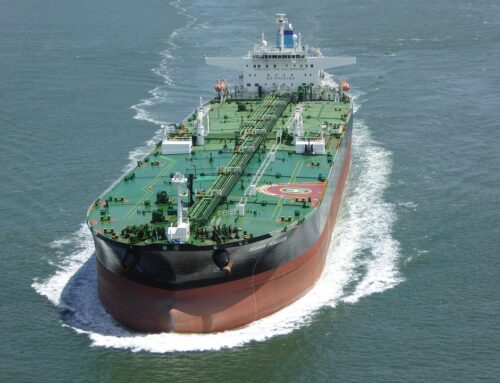In our previous article titled “The U.S. – Saudi Arabia Relationship: A Brief Background” we went through the history of the Petrodollar relationship, from the events leading to its formation up to the present day.
In this article, we will build upon this understanding and take a look at the current economic situation in Saudi Arabia, in order to understand how this may affect their future oil production decisions and the global implications of this.
Declining Saudi Economic Performance
Saudi Arabia’s current economic performance is undermined by a number of adverse factors. Unfortunately, with such a heavy reliance on oil revenue (representing 90% of government taxes and 40% of GDP), the potential solutions are somewhat limited.
In 2015, the country ran a deficit for the first time in its history. According to the Saudi Arabia Monetary Authority (SAMA), this was equal to 22% of GDP. To date, Saudi Arabia has burned through over $100 billion of their cash reserves, which now stand at $650 billion. The projections for the coming years are also negative.
The predominant cause for this unprecedented deficit are the persistently low oil prices witnessed throughout 2015, which have also continued through 2016 as well.
This decrease in oil price was partially caused by Saudi Arabia itself, due to their refusal to curtail oil production to counter the recent emergence of shale oil in North America.
However, the longer Saudi Arabia refuses to cut oil production, the more likely it will force other countries with weak cash reserves into a crisis. The biggest concern from this point-of-view is Russia, which is currently facing difficult domestic economic conditions and a deterioration of her relations with Ukraine. Others include Azerbaijan, whose current economic conditions have led to a banking crisis and protests, and unstable neighbouring countries such as Kazakhstan, Uzbekistan and Turkmenistan.
On the other hand, a reduction in oil production may not actually be an adequate response to rebalance the accounts, mainly the inability of OPEC countries to maintain their assigned quota of production. Additionally, there is an insurmountable surplus capacity that determines an oil glut not manageable via cutbacks in production.
Expectation and reliance on the government compounding the issues
If a reduction in oil production is unlikely to solve the country’s issues, a deficit reduction needs to be attained in other ways. Typically, an immediate recommendation would be to undertake austerity measures as a means of achieving this goal.
However, a closer look at Saudi Arabia reveals a deep reliance on government spending that it is virtually embedded in public expectations. As can be observed with the government providing subsidised water and electricity, which an unbelievable 86% of the public have stated they want to continue.
In addition to the subsidised utilities, the Saudi government also provides free healthcare and education, paid-for public pensions and does not impose income tax.
The government currently employs almost 90% of all Saudis, often at higher wages than the private sector. In fact, employment in the private sector is seen as such an unattractive alternative that less than 20% of unemployed Saudis would seek it.
To reduce the drawdown on foreign reserves, Saudi Arabia chose to raise a five-year loan of $10 billion from a consortium of global banks. This landmark action was the first debt issuance by Saudi Arabia since 1991. There are rumours they have been considering selling some of their US treasuries, but as was discussed in the first article in this series, this action has not yet been executed.
Saudi Arabia Without Oil: The Investment and Productivity Transformation
Taking a pragmatic approach, the Kingdom of Saudi Arabia engaged McKinsey to conduct an analysis and propose options for a potential future course of action. As a result of this, a report was produced in 2015 called “Saudi Arabia Without Oil: The Investment and Productivity Transformation.”
The report indicates a number of solutions, which closely resemble the typical IMF policies, which were designed to secure Washington consensus: Transform the economy from a government-led to a market-led one, cut subsidies and transfer payments, and sell government assets to finance the transition.
Unfortunately, the report could arguably be labelled ‘generic’, as it fails to consider the countless cultural, religious and political obstacles, which would need to be removed in order to implement these strategies.
For example, the report makes the case for a cut in public-sector employment. However, as mentioned earlier, the culture of Saudi Arabia is very much dependent upon state employment. Any changes to this situation could lead to social unrest and protests, which would not only undermine the political establishment but also potentially the monarchy.
The report also boldly suggests a shift from being an oil-dependent economy to one focused on other industries, such as tourism. Not only would this require large amounts of investment, but it would also need cultural compromises to be made, including relaxing some of their religious norms for tourists.
Despite these limitations, Prince Mohammed Bin Salman (the current ruler of the Kingdom) approved of the report, and he embedded its findings in his own paper called “Saudi Vision 2030.” Although there is no clear transition roadmap or expected milestones, it does rely on more private investment to help diversify the economy.
A primary candidate for the role of capital supplier is China, which has already signed a $2.48 billion nuclear deal with Saudi Arabia and is currently its largest trading partner.
Based on the evolution of the oil pricing mechanism (as explained in the previous article in this series), the possibility that the Saudi riyal will eventually be de-pegged from the US dollar is becoming more and more concrete. This scenario is in line with the view that it will be replaced with a basket of its oil customers’ currencies dominated, for example, by the yuan or gold.
Could the biggest IPO in history be a solution?
The most astounding measure suggested by both reports is the sale of a small stake of the state-owned ARAMCO oil company via an IPO.
Total control of Arabia’s oil wealth is the root of the royal family’s power, influence and success. Therefore, a solution involving giving up control of oil potentially poses an existential dilemma to Saudi Arabia. A reduction in the royal family’s grip on the oil wealth would be perceived as weakness and could diminish their legitimacy as the absolute rulers of Arabia.
Even floating a small portion of ARAMCO would entail a series of problems. Firstly, it would complicate the Saudi position within OPEC, due to the need to prioritise shareholder interests. This could cause conflicts of interest when these needs run counter to OPEC’s agenda, resulting in a loss of legitimacy for the country.
Secondly, ARAMCO would need to undergo detailed due diligence, which would shed light on various aspects of the business which are currently well-guarded secrets. This includes (but are not limited to): the effective state of the oil reserves, operating financial figures (extraction, production etc.) and real ownership of oil fields. Overall, the company would have to open its books for public scrutiny and there is always the risk to find something, which could embarrass the royal family.
Additionally, Saudi Arabia would have to commit to avoid certain decisions that would harm the company’s performance or investors such as not raising taxes which could penalise investors, not to preferentially employ Saudi nationals due to the higher salary expectations than foreign workers, and not to use the revenue from oil as a political or economic instrument of its foreign policy.
Assuming an implied (and very theoretical) valuation as high as $10 trillion, this would be the largest IPO ever made and it is no surprise it has been attracting the ravenous attention of the major investment banks. Even with a meagre portion of the overall company being floated, the IPO could generate fees worth billions for the banks involved. All major financial stock exchanges are being considered, and as of now, the target date for the operation is 2018.
The track record for state-controlled oil companies going public does not bode well for ARAMCO. The performance and reputation of forbearers such as Rosneft in Russia and Petrobras (NYSE:PBR) in Brazil have been far from positive. In addition to poor stock performance, their conduct has also been brought into question on numerous occasions since multiple cases of corruption and profit-skimming have emerged.
Even considering the financial cash flow the IPO would generate, the deal still leads to some perplexing questions when the implications and risks it would entail are considered.
Despite the low cost of oil and the depletion rate of the Sovereign State Fund (the main reserve of cash of the kingdom), the financial situation is not as dire as one may assume since the country can still count on billions worth of reserves to meet its needs until the end of the decade, at the very least.
If Saudi Arabia wants to avoid depleting their reserves, a strong case for raising additional funds by issuing debt could be put forward. Considering they already turned to the world of private finance earlier this year, it begs the question why they are discarding this as a further option. With the current low interest environment, it would appear to be a more efficient measure than an IPO of ARAMCO, with fewer political and geopolitical implications.
The points above suggest the political leadership of the kingdom is going through a mind shift and seems to be compelled to push certain agendas. A question remains unanswered (and one that would provide a key to understanding the most recent events and decisions): Are these agendas aligned with the overall financial and political welfare of the country? In other words… who profits?
By Nicholas Puri & Lorenzo Beriozza


